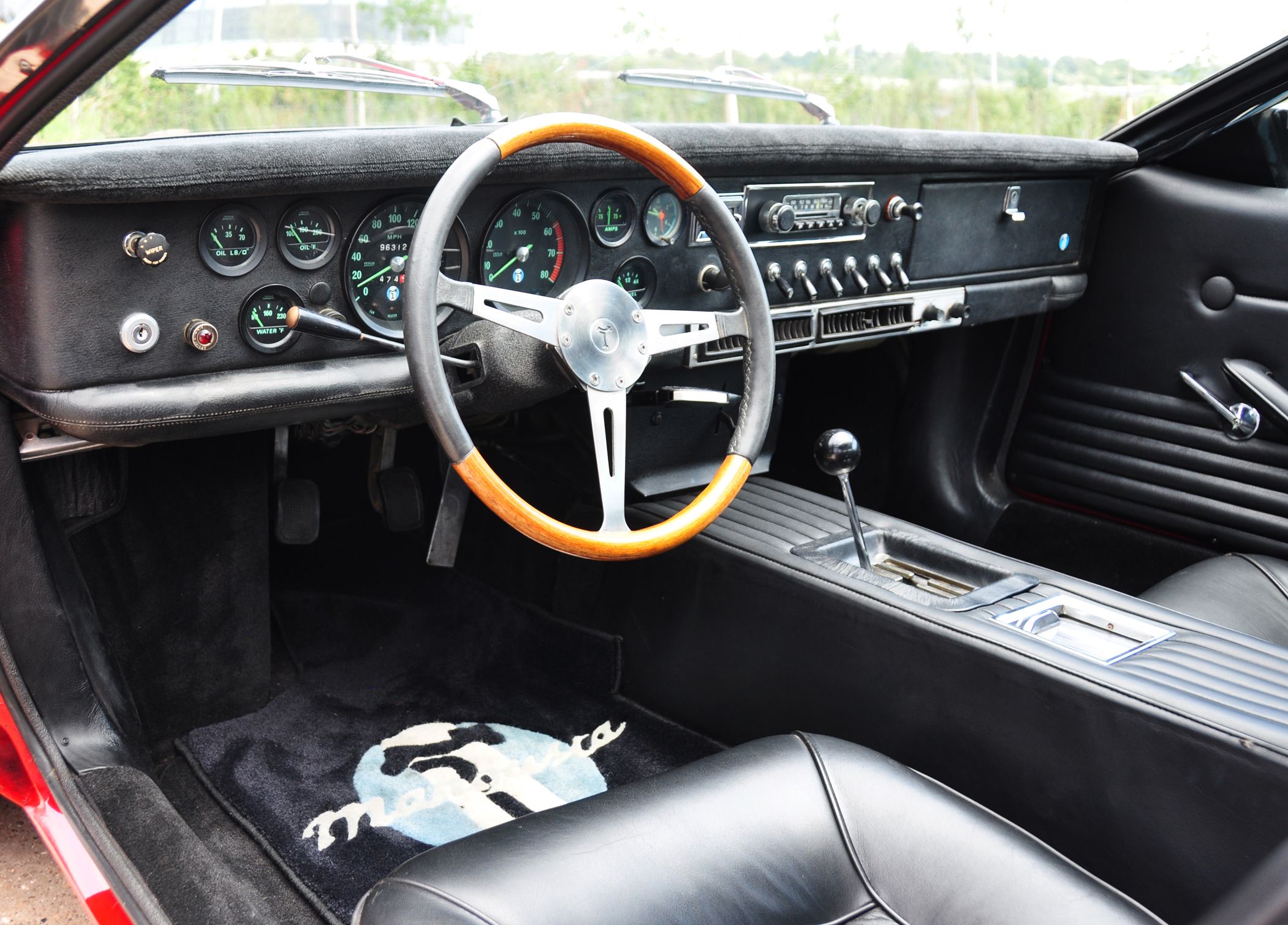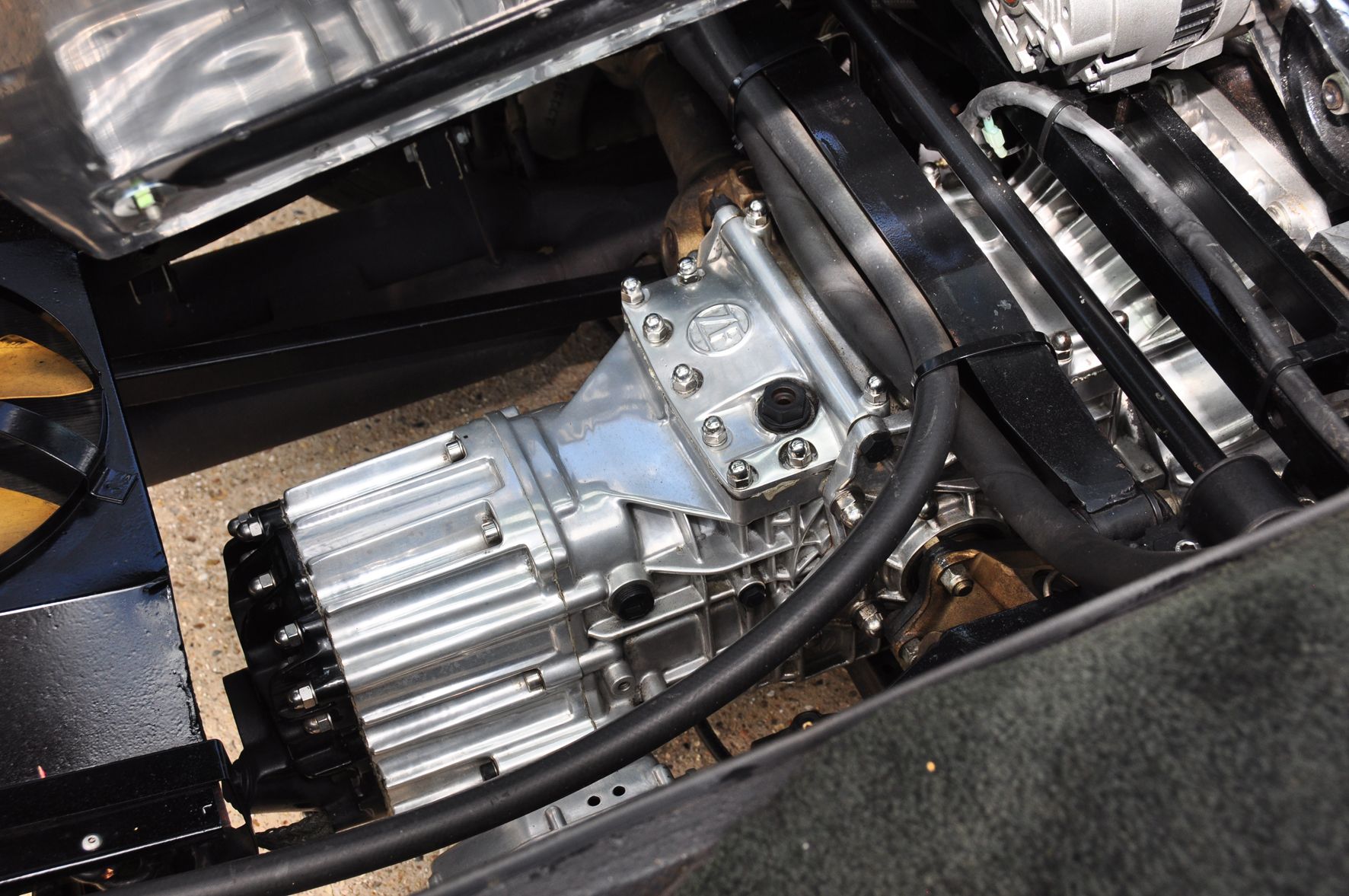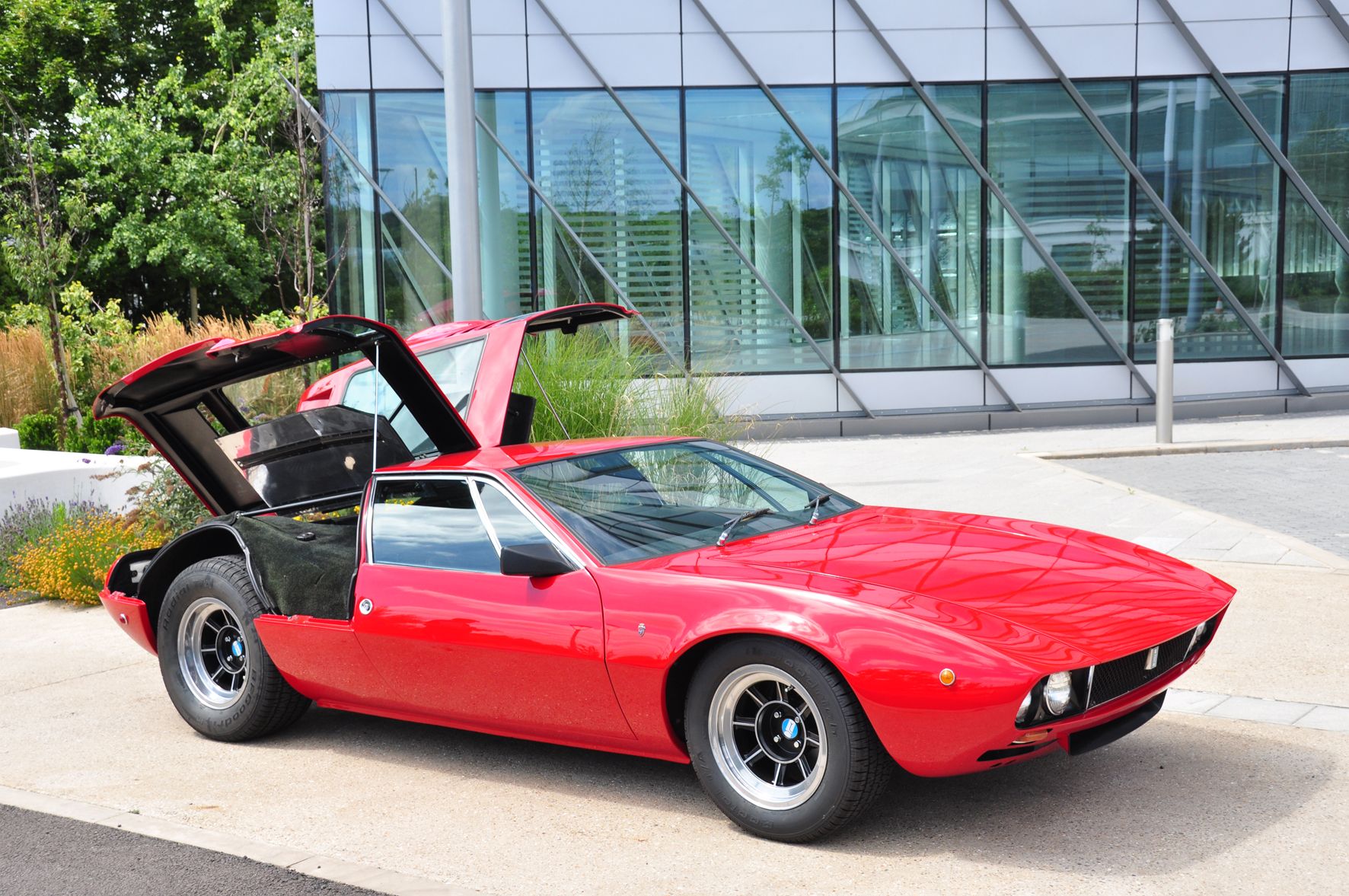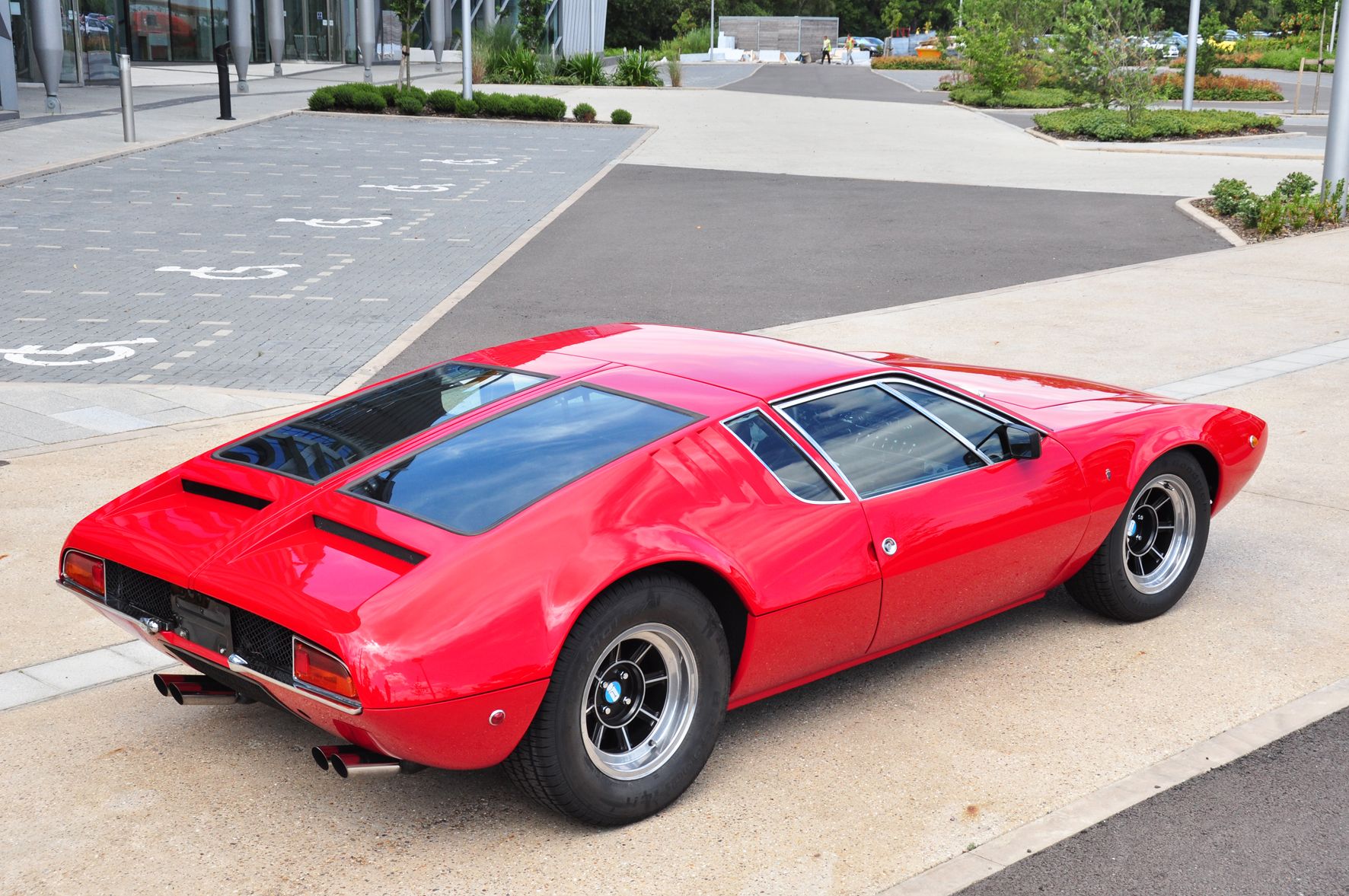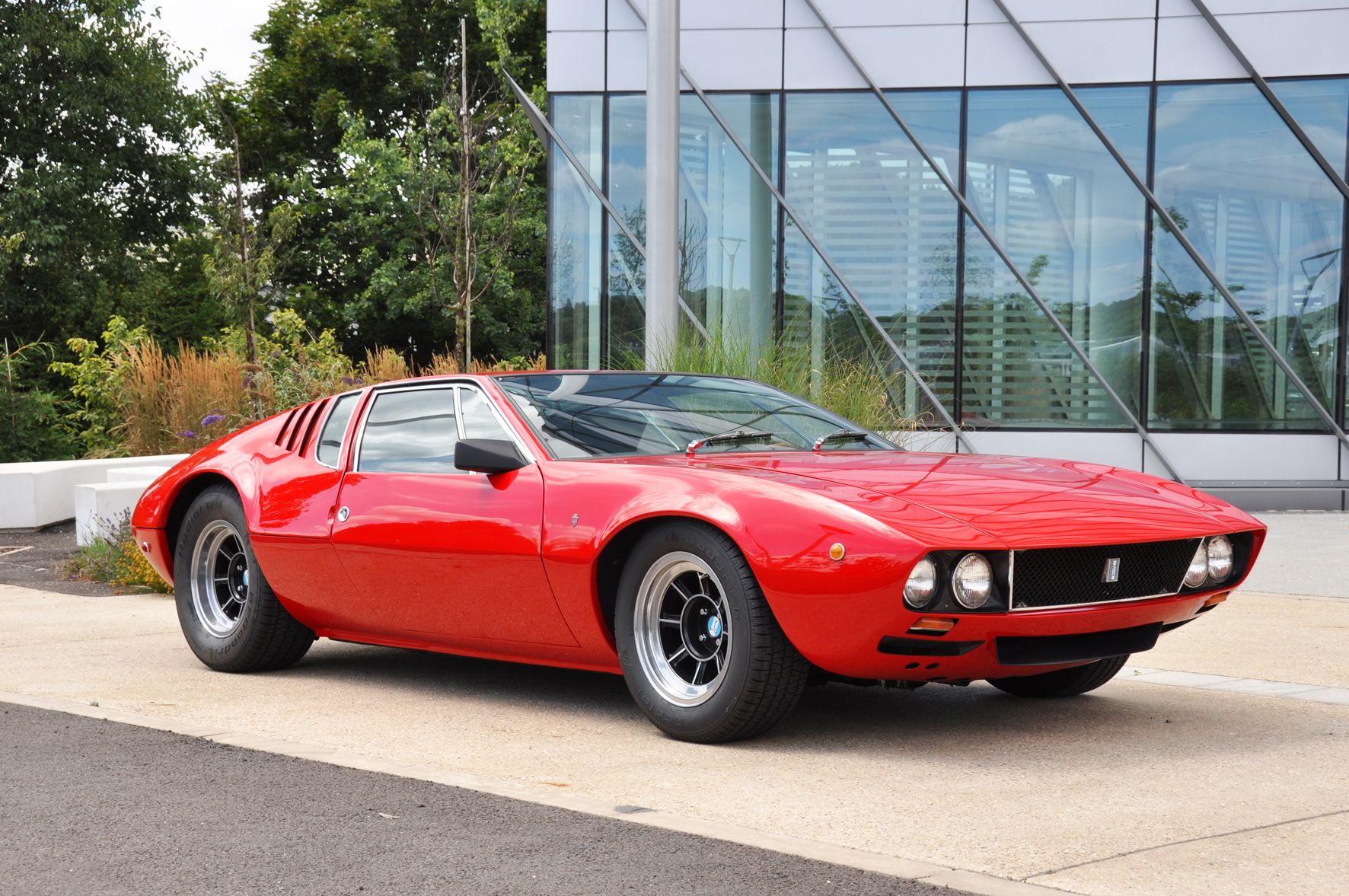In 1963, when Ferruccio Lamborghini had barely established the Lamborghini->ke44 brand in Sant'Agata Bolognese, De Tomaso->ke27 had already launched its first road-going production model. The Vallelunga arrived four years after Alejandro de Tomaso founded the new brand in Modena, starting what would soon become one of Italy's most celebrated supercar->ke177 companies. In 1966, De Tomaso introduced the Mangusta,->ke4186 its first model to be produced in significant numbers.
Like the Vallelunga, the Mangusta also sported a mid-engine configuration. However, the Italians dropped the four-cylinder engine borrowed from the Ford->ke31 Cortina in favor of a more powerful V-8, sourced from the first-generation Mustang. The chassis, on the other hand, was based on the Vallelunga's and modified to handle powerplants with higher torque.
The car's name, Mangusta, is Italian for mongoose, a small animal known for its quickness, and its ability to fight and kill venomous snakes, particularly cobras. Legend has it that the car was named the Mangusta because De Tomaso had some talks with Carroll Shelby to replace the 1963 Shelby Cobra with a race car to be built in Italy by De Tomaso, but the project ended in 1965, when Shelby was assigned to help with the development of the 1964-1969 Ford GT40.
The Mangusta was replaced in 1971 by the 1971-1991 De Tomaso Pantera, which would become De Tomaso's most popular model, with over 7,000 units built in 20 years. But despite being overshadowed by the Pantera, the Mangusta is now considered a collectible as one of the very few European cars to feature American power.
Continue reading to find out more about the De Tomaso Mangusta.
1967 - 1971 De Tomaso Mangusta
- Make: Array
- Model: 1967 - 1971 De Tomaso Mangusta
- Engine/Motor: V8
- Horsepower: 221
- Transmission: 5 speed ZF transaxle
- [do not use] Vehicle Model: Array
Exterior
Like most supercars from that era, the Mangusta was stunning to look at. Even though the lines were clean and simple, as opposed to say the Lamborghini Miura's,->ke378 the Mangusta showcased a new and powerful stance that would soon become the norm with Italian mid-engined cars.
Both ends lacked standard bumpers and most of the front fascia consisted of a rectangular grille, quad headlamps, and small turn signals in the apron. Designed by Giorgetto Giugiaro while he was working at Ghia, the Mangusta had a sloping nose due to the front hood extending over the upper section of the front fascia.
But Giugiaro's unique feature for the Mangusta was located at the rear in the form of gullwing-style engine doors. While this was innovative by design, it only provided access to half the engine bay at a time, which is probably why the Mangusta was the first and last production car with such a feature.
Around back, the Italian supercar showcased a short deck, chrome-trimmed taillights, and four large exhaust outlets.
The car received few modifications throughout its production cycle. Notable changes include a batch of around 50 models produced with two pop-up headlamps for the U.S. market in 1970. Also, all U.S.-spec models featured slightly different taillights with red turn signals.
Interior
The interior of the Mangusta was rather spartan, but in line with vehicles of the era, which lacked many of the amenities you get nowadays. The dashboard, although packed with numerous gauges and switches, was simple and featureless. The same goes for the leather-wrapped center console and door panels. The three-spoke steering wheel was part wood, part leather. The sporty seats were also swathed in leather, while every inch of the floor was covered in soft carpet and De Tomaso-branded mats. Power windows and air conditioning were standard features. Unlike most supercars of the era, the Mangusta was available with various interior colors, including black, cream and light brown.
Drivetrain
The Mangusta was offered with two engines, both supplied by Ford. The European models featured a 4.7-liter V-8 with 302 horsepower and 411 pound-feet of twist, while U.S. versions crossed the pond to North America with a 5.0-liter V-8 rated at 230 horses and 310 pound-feet of torque. Both units were linked to a five-speed manual transmission that routed the power toward the rear wheels.
As you might have already guessed, the Euro-spec Mangusta was the quicker of the two. The 302 horses enabled it to hit 60 mph in 4.9 seconds on its way to a top speed of 155 mph. The U.S.-spec model, on the other hand, reached the benchmark in 6.4 seconds before topping out at the same 155 mph. Estimated fuel consumption was 13.3 and 15 mpg, respectively.
Not all Mangustas were fitted with Ford engines though. One car was built with a Chevrolet->ke199 engine for GM->ke1024 vice president Bill Mitchell, who obviously couldn't have a supercar with a Ford powerplant.
Mitchell sent De Tomaso a 5.4-liter V-8 small-block with 350 horsepower. Interestingly enough, before reaching a deal with Ford, De Tomaso asked Chevrolet to provide V-8 engines for the Mangusta. Knowing that the Mangusta would compete against the Corvette,->ke1280 Chevy said no.
The Mangusta was also equipped with independent suspension, disc brakes at all four corners and rack and pinion steering, features that weren't very common on production cars in the late 1960s. However, due to its 32/68 weight distribution and less than rigid chassis, the Italian car suffered from stability problems and poor handling.
|
Type |
Ford 289 V8 |
Ford 302 V-8 |
|
Output |
302 HP |
230 HP |
|
Torque |
411 LB-FT |
310 LB-FT |
|
Transmission |
5-speed ZF transaxle |
5-speed ZF transaxle |
|
0 - 60 MPH |
4.9 s |
6.4 s |
|
Top speed |
155 MPH |
155 MPH |
Racing History
Though De Tomaso had no intention of taking the Mangusta racing,->ke447 a group of privateers modified the car for motorsport events. Between 1973 and 1976, race-spec Mangustas entered nine events across the U.S., including the 6 Hours Mid-Ohio, 200-mile Road Atlanta, and 200-mile Talladega. Unfortunately, the Mangusta's never managed to finish higher than 15th. A Mangusta was supposed to race at the 1973 12 Hours of Sebring in the GTO class, but the car never made it to the starting grid.
Prices
When launched in 1967, the Mangusta retailed from $11,150 before options. De Tomaso built 401 examples -- 150 were sold in Europe and 251 shipped to North America. About 250 Mangustas are known to still exist.
Though it's not as expensive as other supercars from the 1960s, the Mangusta is a relatively sought-after collectible, especially in Europe. In 2015, a 1969 model was auctioned for €168,000 by RM Auctions in Paris, while a 1968 model changed owners for €235,200 at Villa Erba. The record for the most expensive Mangusta sold at auction was established in 2014 at Monaco, when a 1969 model fetched €268,800.
Competitors
1966-1974 Lamborghini Miura
Launched in 1966, the Lamborghini Miura is widely considered to have initiated the mid-engined supercar trend. Unlike the Mangusta, the Miura was powered by an in-house 4.0-liter V-12 engine. At first, the mill cranked out 345 horsepower, but it was later updated to 365 horses in the Miura S and 380 horsepower in the 1971-1972 Lamborghini Miura SV. The latter was the fastest production car in the world in 1971, achieving top speeds of around 170 mph. The SV needed 5.7 seconds to hit 60 mph from a standing start, and 14.3 ticks to complete the quarter-mile.
Nowadays one of the most sought-after supercars built in the 1960s, the Miura can easily fetch more than $500,000 at auction. The SV is the most expensive -- mostly due to its small production run and high-output V-12 -- with mint-condition examples changing owners for around $2 million. In 2014, a beautifully restored Miura SV was sold for $2,090,000 at an RM Auctions event in Monterey, California.
Read more about the Lamborghini Miura here.
1967-1973 Maserati Ghibli
Also designed by Giorgetto Giugiaro at Ghia, the Ghibli arrived in 1967 as a front-engined grand tourer. It's design was somewhat similar to the Mangusta's, featuring a shark-shaped nose and a sloping roofline. However, the long hood and pop-up headlamps set it apart from both the De Tomaso and the Miura.
Motivation came from a 4.7-liter V-8 rated at 310 horsepower, mated to either a five-speed manual or a three-speed automatic. A more powerful Ghibli SS model was released with a 4.9-liter V-8 and 330 horsepower. This model needed 6.8 seconds to hit 60 mph and had a top speed of 155 mph. Unlike the Miura and the Mangusta, the Ghibli was also offered as a convertible. A restored Ghibli SS can set you back up to $400,000.
Find out more about the Maserati Ghilbi here.
1968-1973 Ferrari 365 GTB/4 Daytona
Developed as a successor to the 275->ke3515 GTB/4, the 365 GTB/4, unofficially known as the "Daytona" after Ferrari’s 1-2-3 finish at the 1967 24 Hours of Daytona with the 330 P3/4, launched in 1968 and quickly became regarded as Maranello's main weapon against the Lamborghini Miura and the Maserati Ghibli. The Daytona was actually very similar to the Maserati,->ke51 employing the same 2+2 seating configuration and a front-mounted engine.
Power came from a 4.4-liter V-12 featuring six Weber twin carburetors and a five-speed manual transmission. The engine generated 352 horsepower, enabling the Daytona to hit 60 mph in just 5.4 seconds and a top speed of 174 mph. Unlike the other supercars in this comparison, the Daytona was also a successful race car, obtaining GT class wins in the 1972, 1973 and 1974 24 Hours of Le Mans.->ke1591 As with many Ferraris,->ke252 the Daytona is quite expensive nowadays, changing owners for up to $1 million.
Read more about the Ferrari Daytona here.
Conclusion
Grated, De Tomaso cars aren't as valuable as Ferraris, Lamborghinis, and Maseratis nowadays. Not even as much as the Pantera, which was built in significantly larger numbers and had a lifespan of two decades, longer than any other Italian supercar. However, the Mangusta remains a important part of the "Italian muscle car" breed, alongside the 1963-1975 Iso Grifo, 1965 Bizzarrini 5300 GT, and the Monteverdi Hai 450.
The fact that the Mangusta is significantly more affordable than other supercars from the era is actually a good thing. Giugiaro's design is as exotic as they get and power is not that bad for a car that weighs in at around 2,800 pounds. And besides, 1960s supercars aren't the type of vehicles you'd race at the Nurburgring->ke999 or Laguna Seca->ke981 too often. But you get a fancy engine hood besides that gorgeous design and Mustang/Cobra engine.


